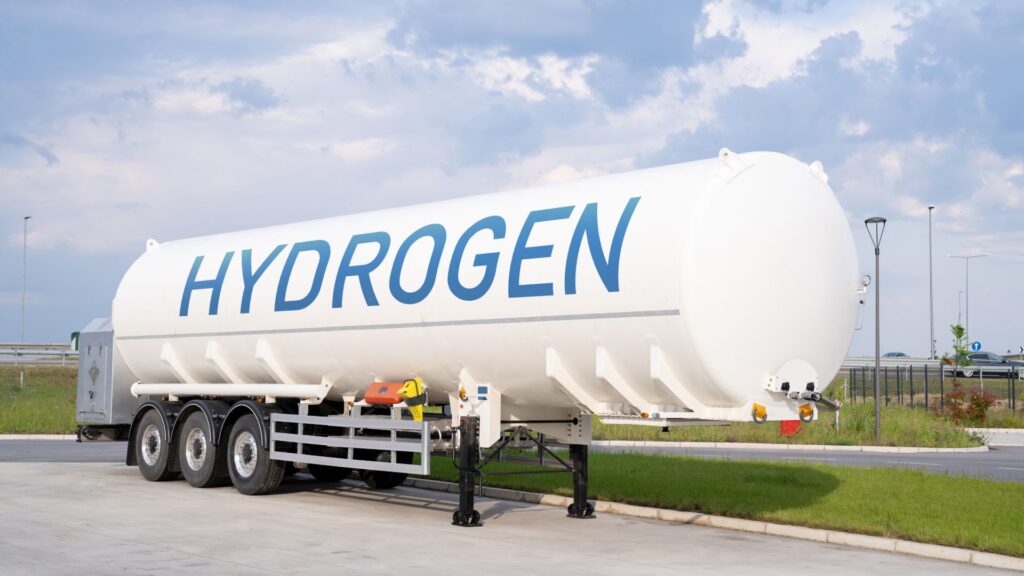Energy Infrastructure in the North Sea
A time-sensitive international challenge to achieve EU’s 2024 climate targets
Europe’s energy system will already have to reach net-zero emissions in the 2040s. The timeline for developing the North Sea’s role in this is tight and requires an internationally coordinated approach. Rapid development of offshore electrolysis should complement an accelerated roll-out of high-voltage DC electric connections combined with strengthening interconnections, both for electricity and hydrogen. Offshore hydrogen storage in salt caverns and empty gas fields can be a valuable complement.
Offshore wind power will play a big role
Net-zero emissions are the EU’s next big goal in climate action. Early indications are that – on 6 February – the European Commission will propose a reduction of around 90% already by 2040. Offshore wind energy will play a large role in achieving such a target. Last year, member states agreed to install 215 – 248 GW of offshore wind capacity by 2040, producing the equivalent of 1/3 of current EU electricity use.
Net-zero emissions are the EU’s next big goal in climate action.
The North Sea Energy Cooperation Group alone has set a target of 193 GW by 2040. This shows that connecting offshore wind is not a national affair anymore. Where almost all offshore wind farms so far were connected ‘radially’ to one country, an optimal energy system will now require multi-purpose interconnectors, effectively connecting wind farms to multiple countries and using those connections as an interconnector between the countries too.
Green hydrogen is rapidly becoming more important, and can be produced offshore as well
At the same time, the recent agreement on the revised Renewable Energy Directive (RED3) has solidified the demand for green hydrogen by stating that 60% of all hydrogen used in industry must be produced from renewable electricity by 2035. Green hydrogen, alongside biomethane, is also one of the candidates to fuel the dispatchable power generation needed to complement wind and solar in the future electricity mix. Electricity supply is generally expected to reach net-zero emissions well before the economy as a whole, and recently seven member states, including Germany and France, have agreed to aim for this by 2035.
This in turn leads to a need for large-scale hydrogen storage: the production of green hydrogen will be most attractive in periods with abundant electricity from wind and solar, and it will be needed on a continuous basis in industry and in periods with less wind and solar for dispatchable power. Such hydrogen storage can be done in salt caverns and empty gas fields; for both options, the North Sea has significant potential.

In integrating the large capacities of offshore wind in the Northwest European energy system, it is important to locate the electrolysers for green hydrogen production near the coast, to avoid having to build unnecessary onshore transmission lines. Recently, the option to even build them at sea has gained traction; while more costly than onshore electrolysis, the relatively high capacity and low cost of gas pipelines would save costs on the infrastructure to bring offshore energy to land, and less landing points would be required.
A coordinated, international offshore infrastructure development is urgently needed
A strongly interconnected European energy system is even more important now that our generation mix is rapidly changing, and variable renewables are becoming more important. Resources are not evenly spread, and periods with abundant wind and sun occur at different times in different locations, with an impact on both electricity and green hydrogen production.
Combining new interconnections with connecting offshore wind requires international coordination in spatial planning, in support schemes, in technical standards, and in supply chains.
A strongly interconnected European energy system is even more important now that our generation mix is rapidly changing.
The Dutch government has recognised this, and has announced an Energy Infrastructure Plan North Sea, to be published in the first half of this year. At Common Futures, we’ve been working with stakeholders and consortium partners on the advice for the strategic vision behind this plan.
Reasoning back from the goals for the 2030-2040 period, we found that targeted action with respect to the development of offshore electrolysis, the need for interconnections, the need for offshore hydrogen storage, and the development of offshore energy hubs is already needed in the next few years. The challenge is to do so in a coordinated and synergetic way with our neighbours.
Useful links
- The North Seas Energy Cooperation
https://energy.ec.europa.eu/topics/infrastructure/high-level-groups/north-seas-energy-cooperation_en - Offshore wind plans 2030-2050, the Netherlands
https://english.rvo.nl/topics/offshore-wind-energy/plans-2030-2050 - North Sea Wind Power Hub
https://northseawindpowerhub.eu/